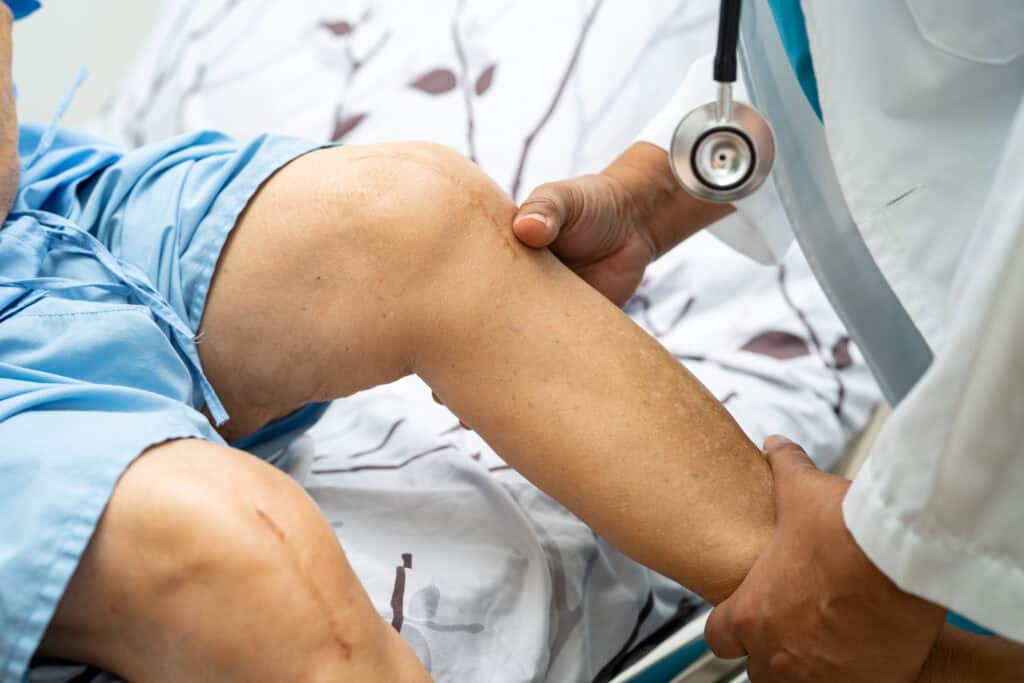
Key Highlights
- Peripheral arterial disease (PAD) happens develops when narrowed arteries lower blood flow to your limbs.
- This common arterial disease is often caused by a buildup of fatty deposits in the artery walls. This condition is called atherosclerosis.
- Some common symptoms are leg pain when walking that goes away with rest, known as claudication, along sometimes with leg numbness or weakness.
- People with risk factors like smoking, diabetes, high blood pressure, high cholesterol, or a family history of heart disease are more likely to have PAD.
- Early diagnosis and changes in lifestyle are very important to manage PAD effectively and avoid serious complications.
Peripheral arterial disease, or PAD, affects blood flow to the limbs, mainly the legs. This happens when the arteries are narrowed. The narrowing is often due to fatty deposits called plaque that build up on in the artery walls. Having PAD increases the risk of other heart-related diseases. This shows why it’s important to be aware of PAD and detect it early.
Exploring the Basics of PAD
Peripheral artery disease (PAD) is like coronary heart disease. In both, plaque builds up in the arteries. This buildup makes it hard for blood to flow smoothly. To really understand PAD, you need to know what it is and what it means for patients, especially in Singapore. Let’s explore these important points.
Defining Peripheral Arterial Disease
Peripheral artery disease, or PAD, is a type of arterial disease. It happens when arteries, mainly in the legs, get too narrow. This limits blood flow. The main cause of this condition is atherosclerosis. Atherosclerosis is when fatty deposits, called plaque, build up inside the arteries. This build-up reduces blood flow and can cause discomfort. It can also lead to serious complications. It’s important to understand how this affects patients in Singapore.
The Impact of PAD on Patients in Singapore
Singapore has an older population and more people are dealing with things illnesses like diabetes and smoking. This means that many individuals suffer from PAD in Singapore. PAD does not just cause leg discomfort. If not addressed, it can lead to serious complications like heart attacks, strokeslegs ulcers, gangrene, and even limb amputation. This shows how important it is to have early diagnosis and good management of patients with PAD in Singapore.
Identifying Symptoms and Recognizing Risks
Knowing the symptoms of PAD is very important for timely help and proper care. It is also important to understand the risk factors common in the Singaporean way of life. This understanding can help with prevention and better healthcare.
Early Warning Signs of PAD
Early diagnosis of PAD is very important for good management. One of the first and most common symptoms of PAD is intermittent claudication. This condition causes pain, aching, or cramping in the legs, mainly during physical activity like walking. The pain usually goes away with rest. However, if PAD gets worse, people might feel pain even when resting, especially in the feet and toes. Other symptoms can include numbness, tingling, coldness, and changes in skin color in the lower limbs.
Risk Factors Specific to the Singaporean Lifestyle
Several lifestyle factors contribute to a higher risk of developing PAD. Here’s a glimpse into some significant ones:
| Risk Factor | Description |
| Smoking | A primary risk factor for PAD, damaging blood vessels and accelerating plaque buildup. |
| High Blood Pressure | Increases strain on artery walls, making them more prone to damage and narrowing. |
| High Cholesterol | Contributes to plaque formation in the arteries. |
| Diabetes | High blood sugar levels can damage blood vessels and accelerate atherosclerosis. |
These risk factors, coupled with genetic predisposition and age, amplify the importance of proactive health management, especially within the Singaporean context.
Understanding Peripheral Arterial Disease (PAD) is very important. It helps with early detection and management. Knowing the symptoms and risks, especially related to the Singaporean lifestyle, can help get the right treatment on time. Making lifestyle changes, getting a proper diagnosis, exercising regularly, and staying updated on new treatments are key to managing PAD well. If you notice symptoms or feel worried about PAD, see a doctor as soon as you can. This way, you can get personalized care. Take charge of your vascular health to enjoy a full and active life. If you want more information or help with managing PAD, think about making an appointment with a healthcare professional.
